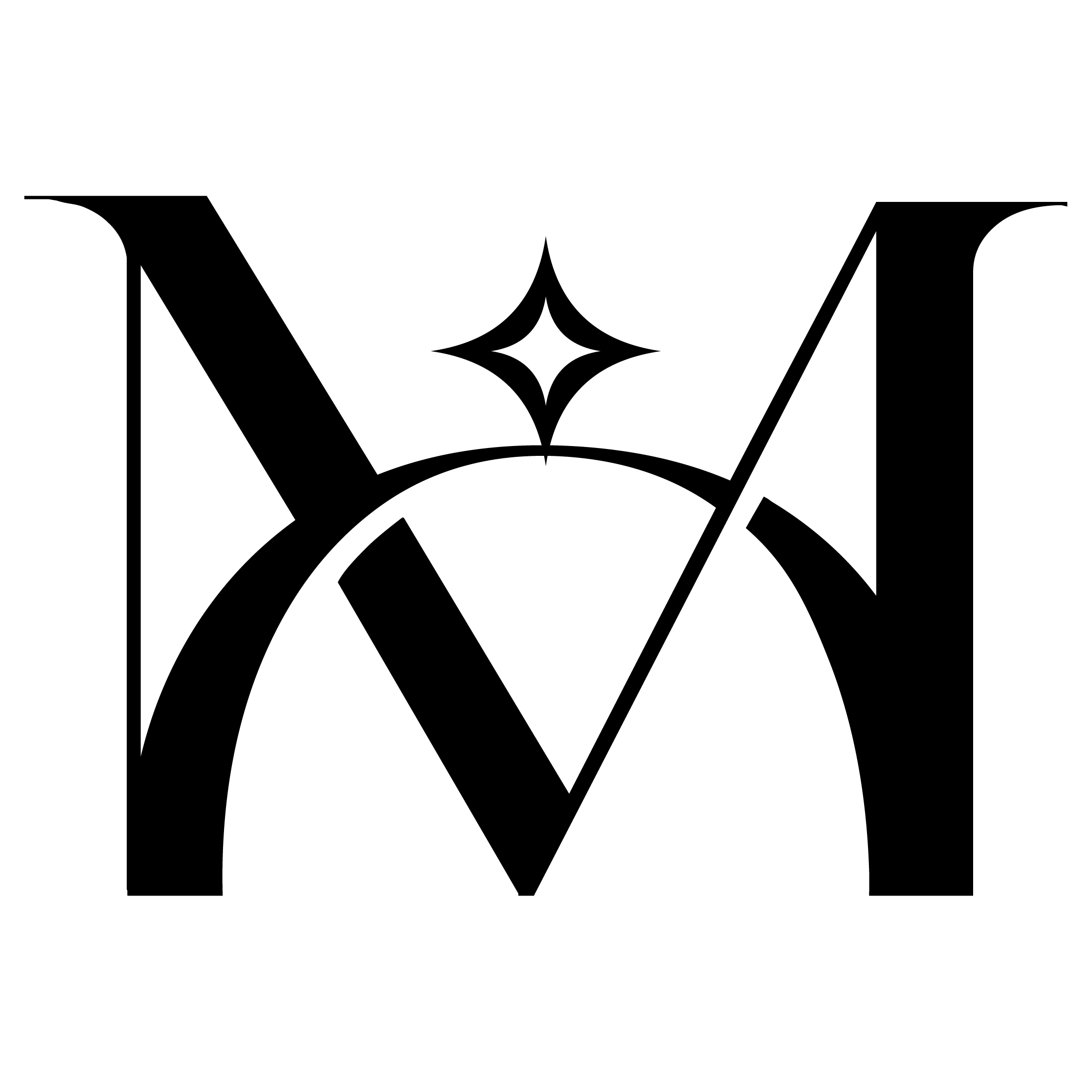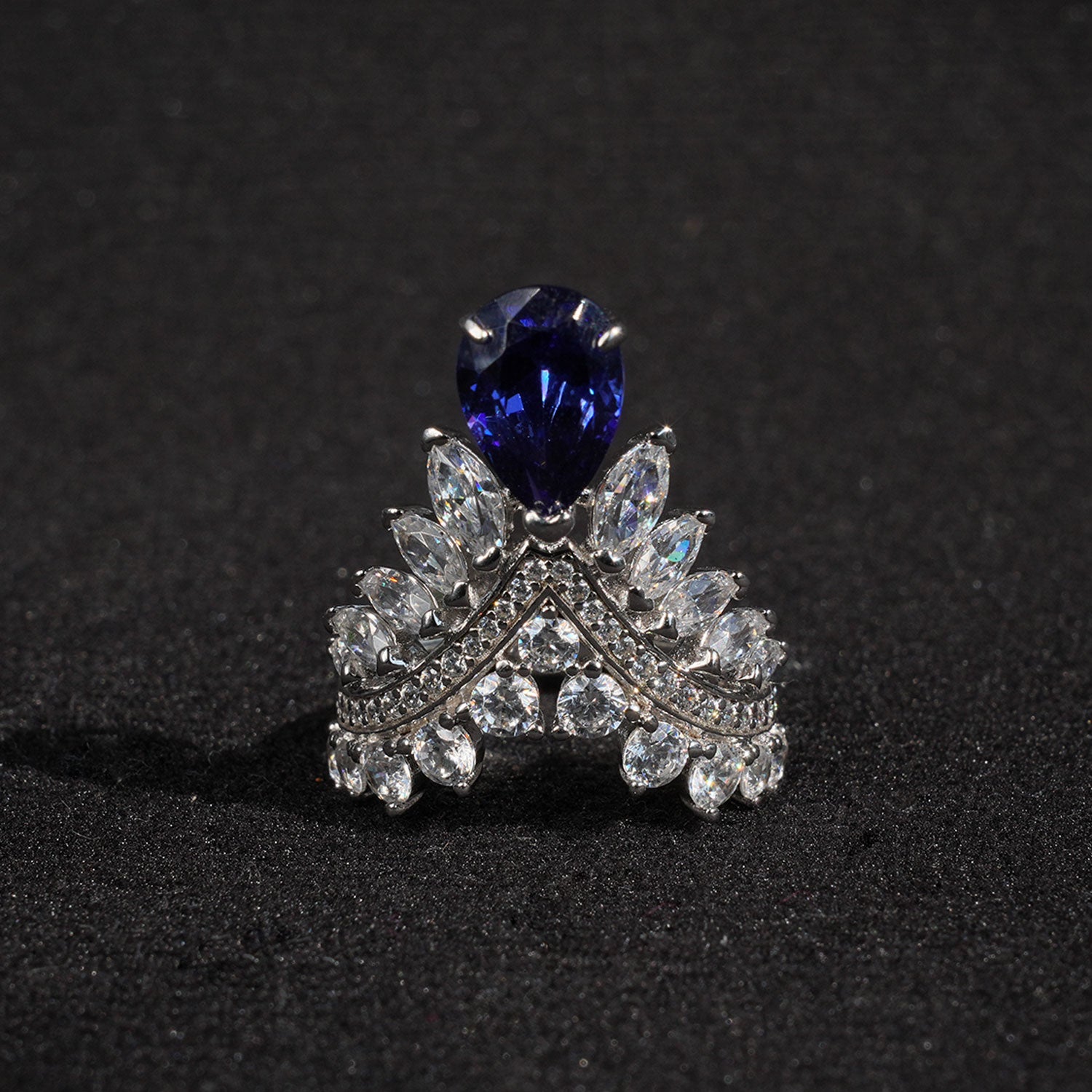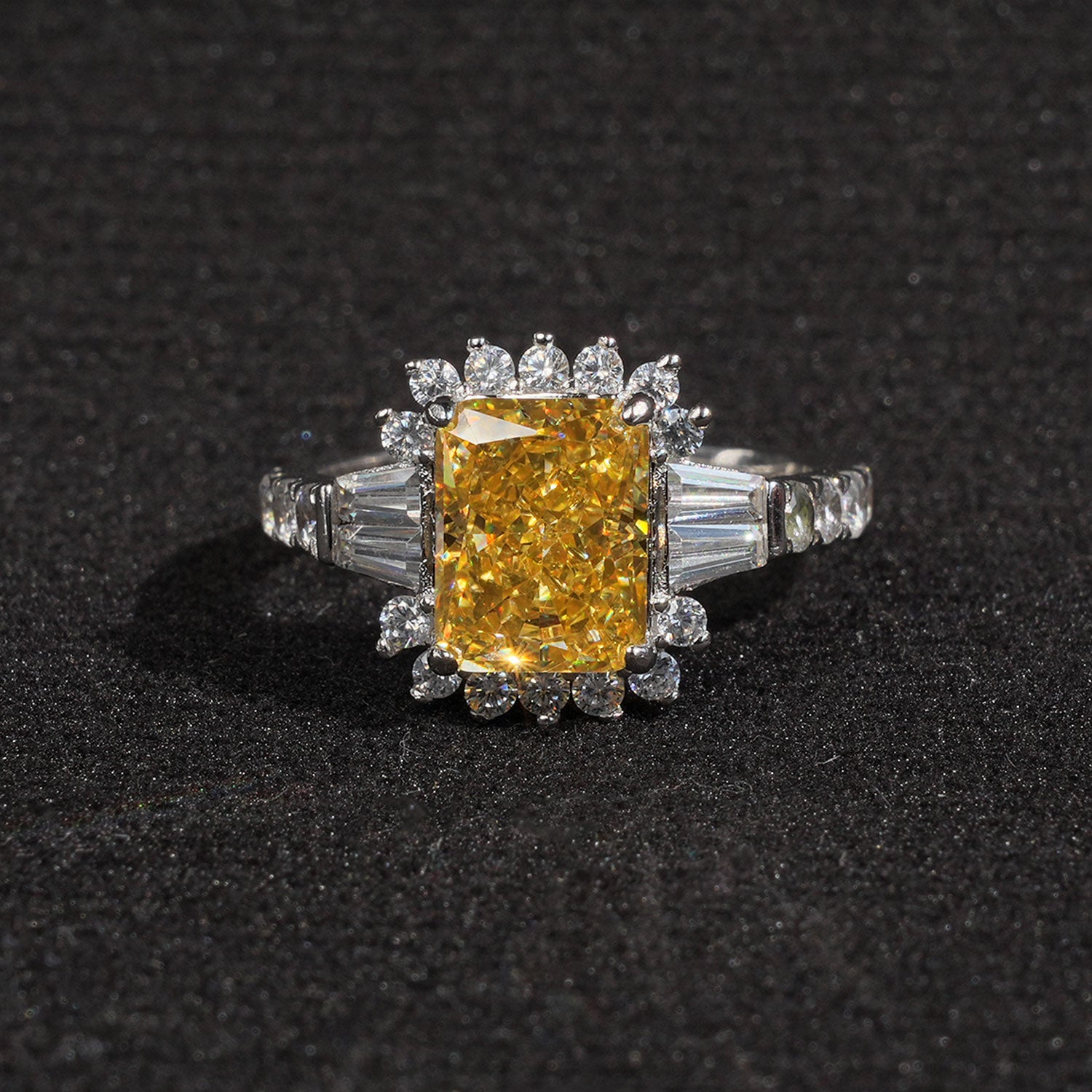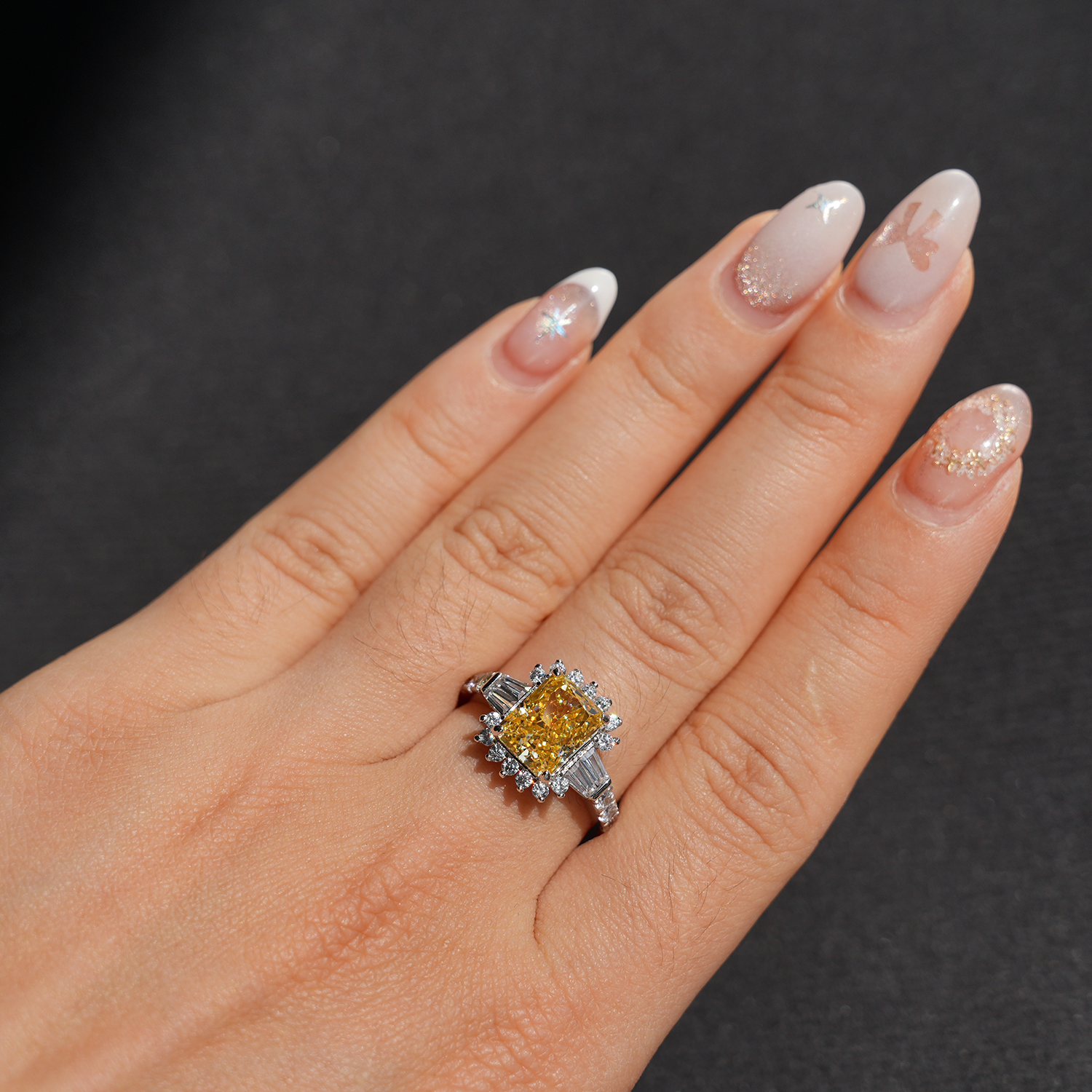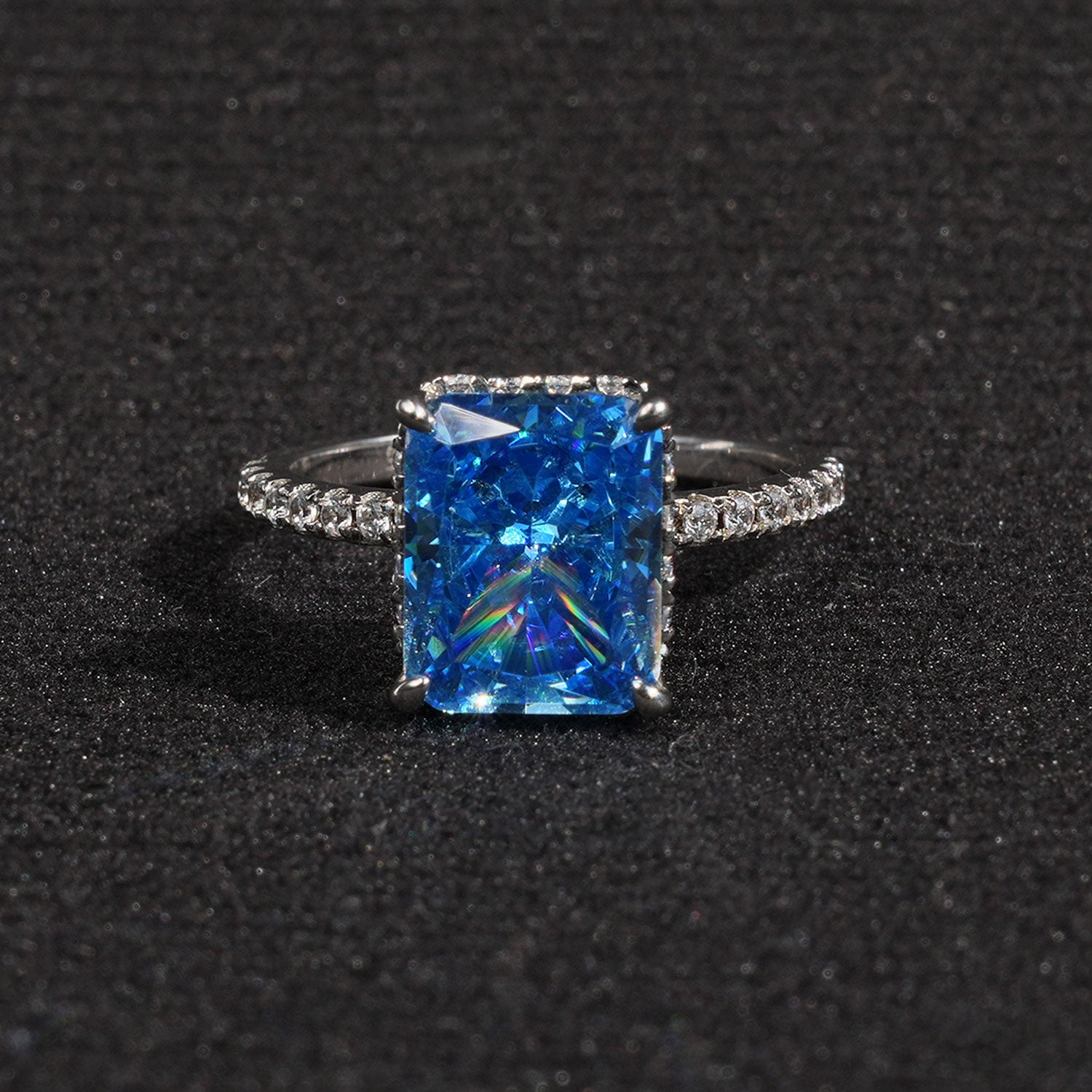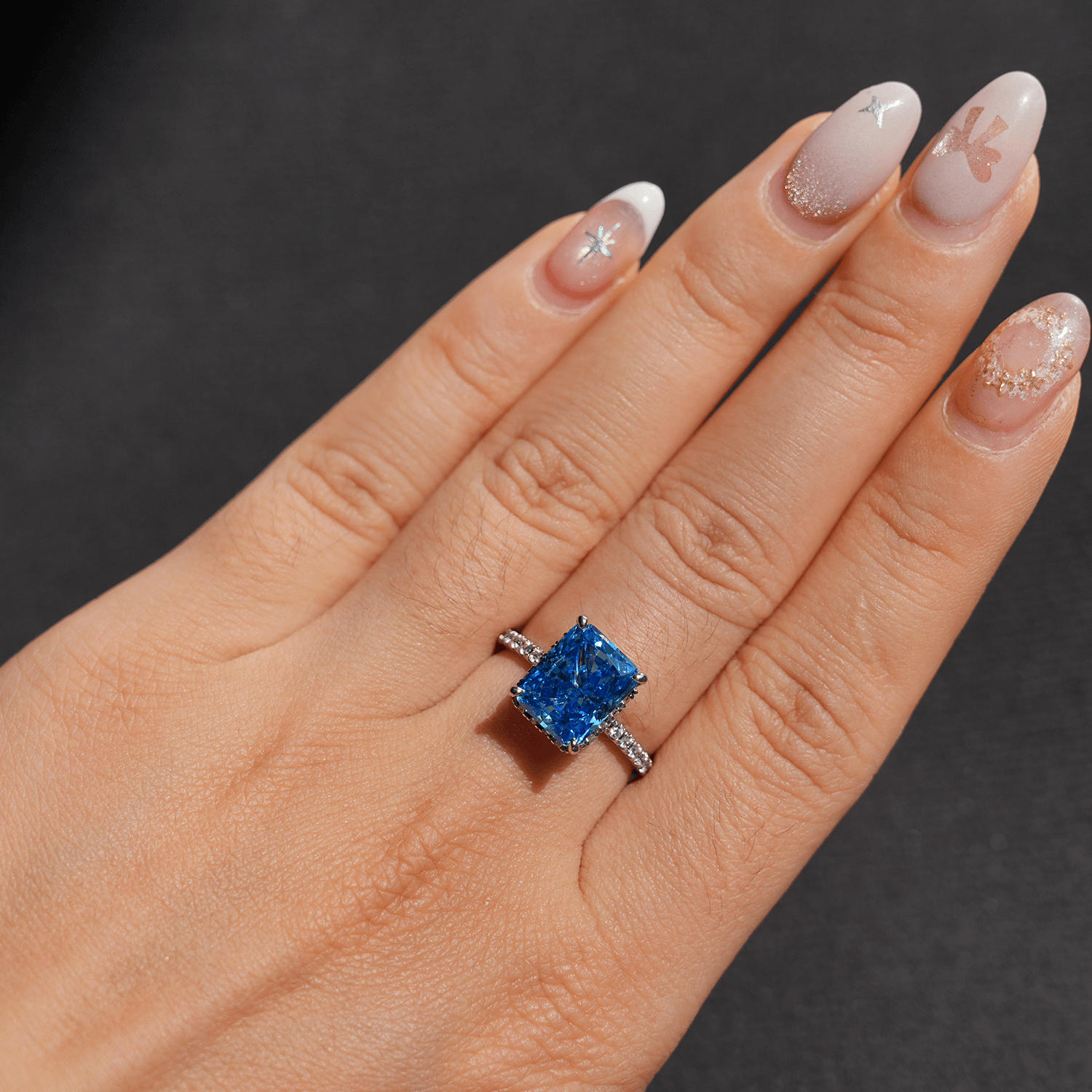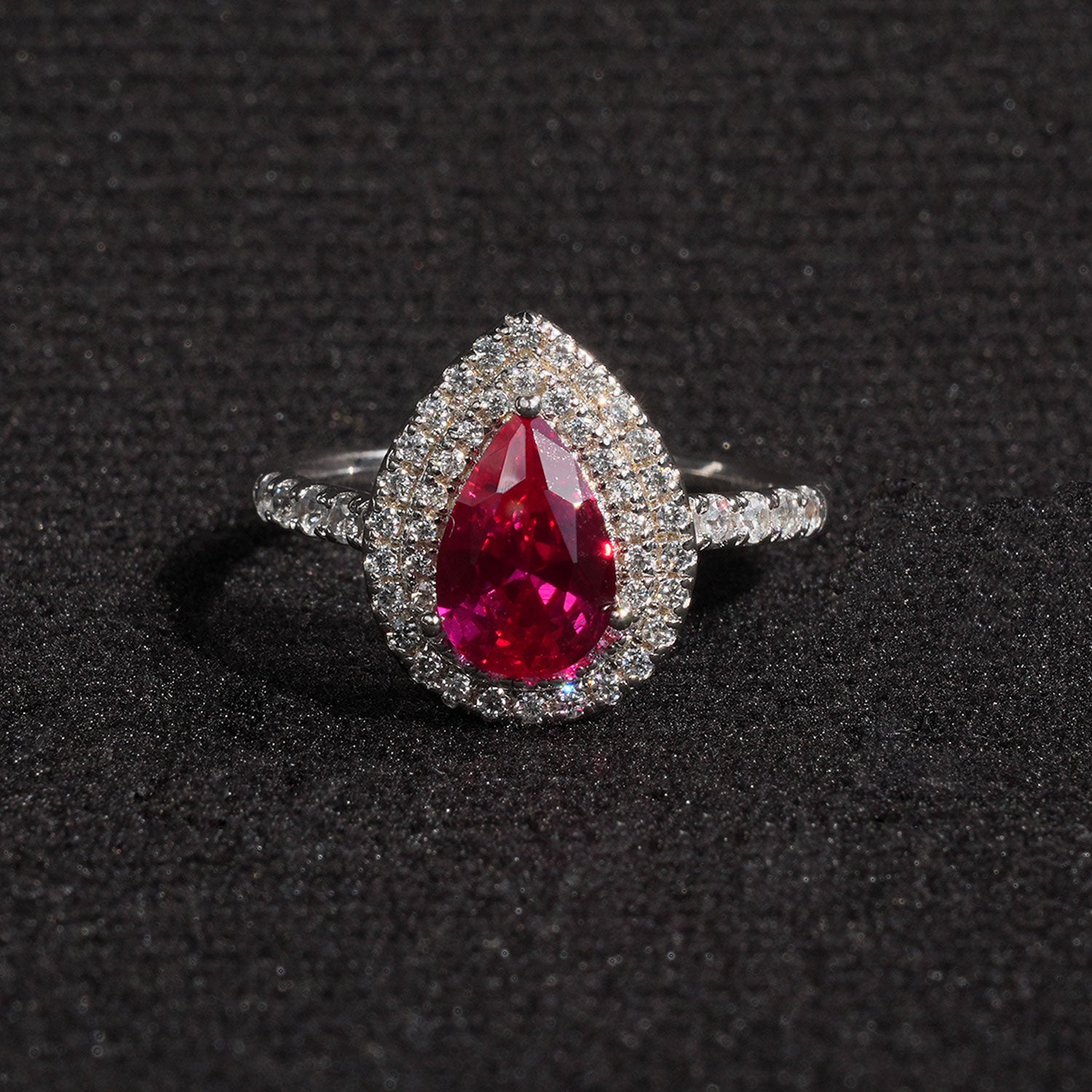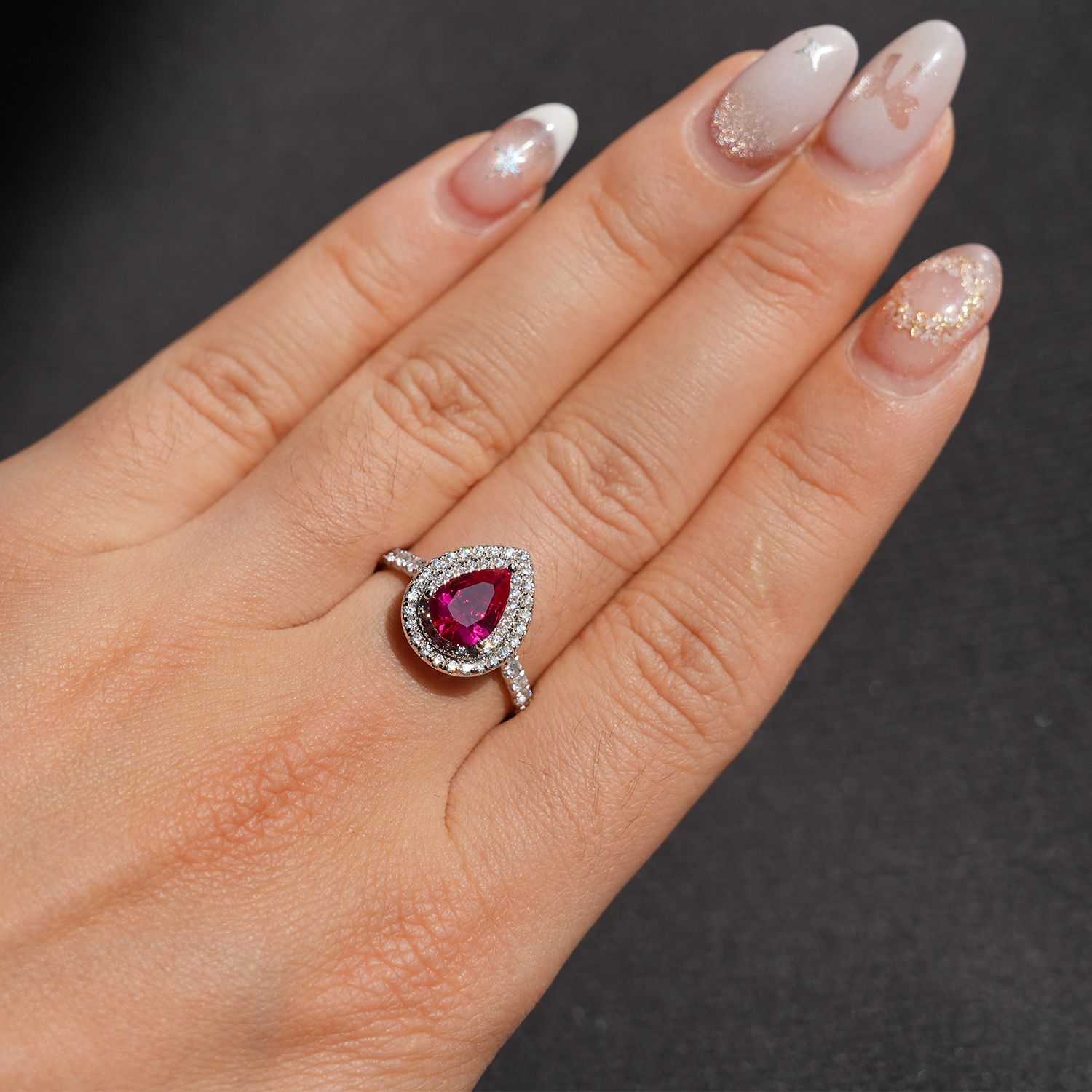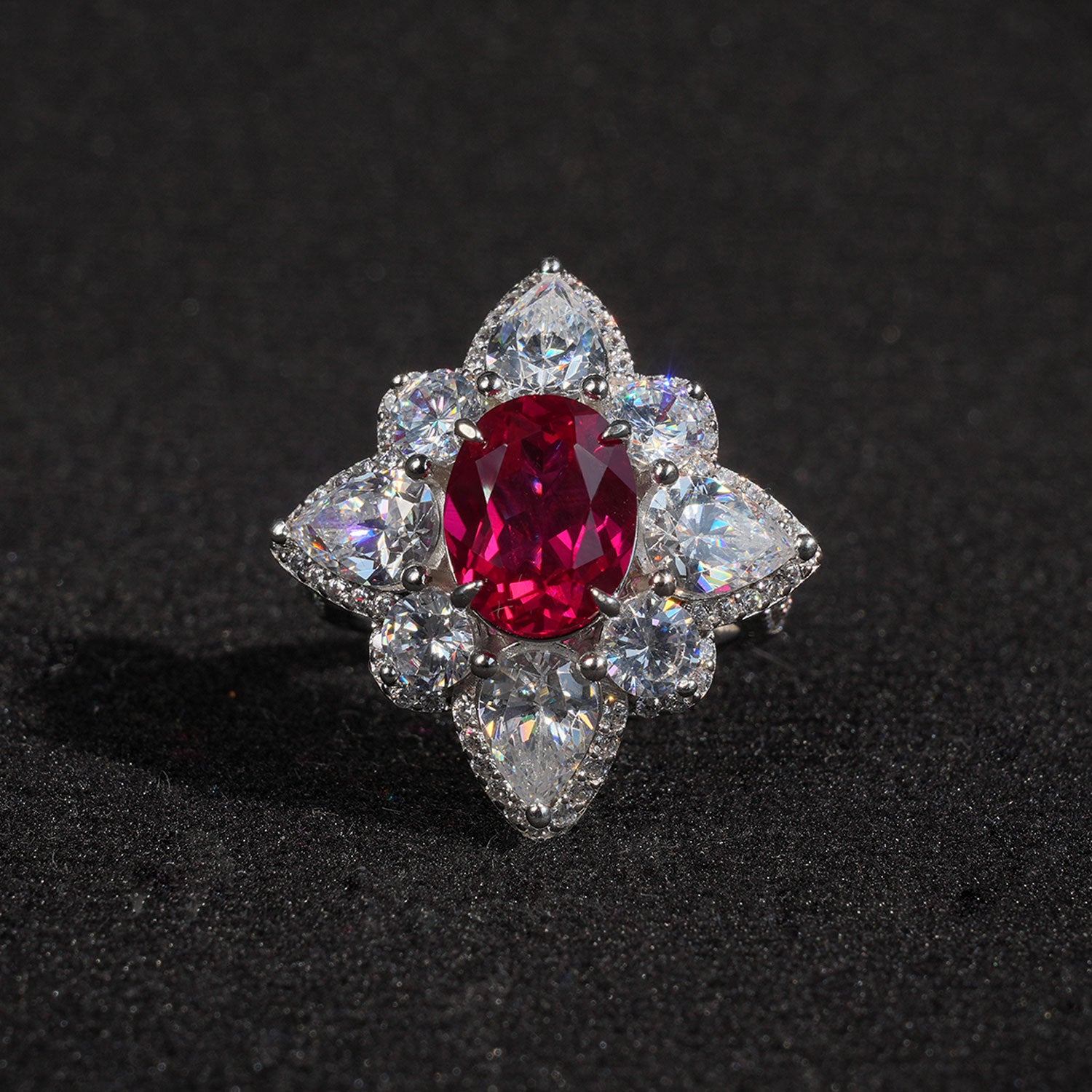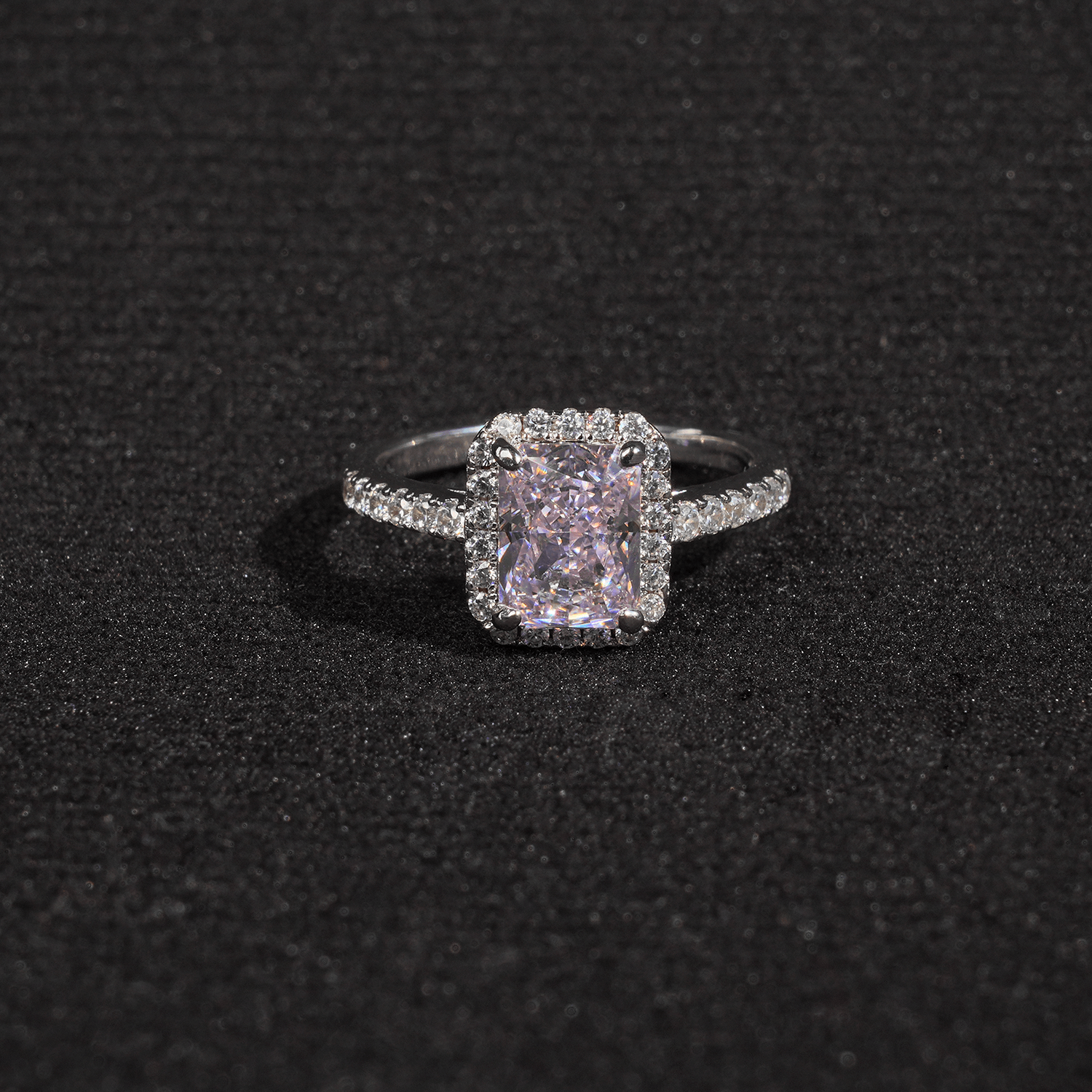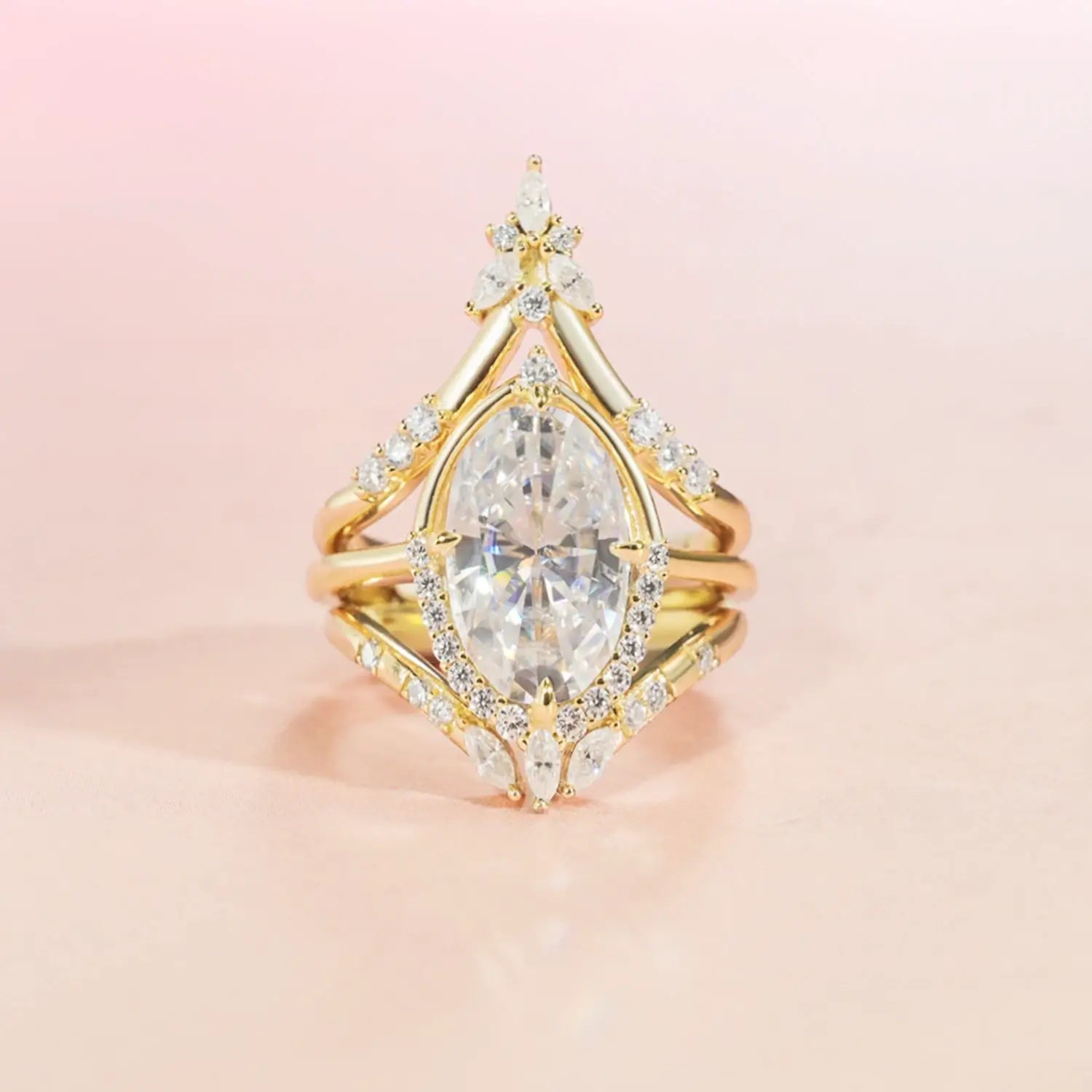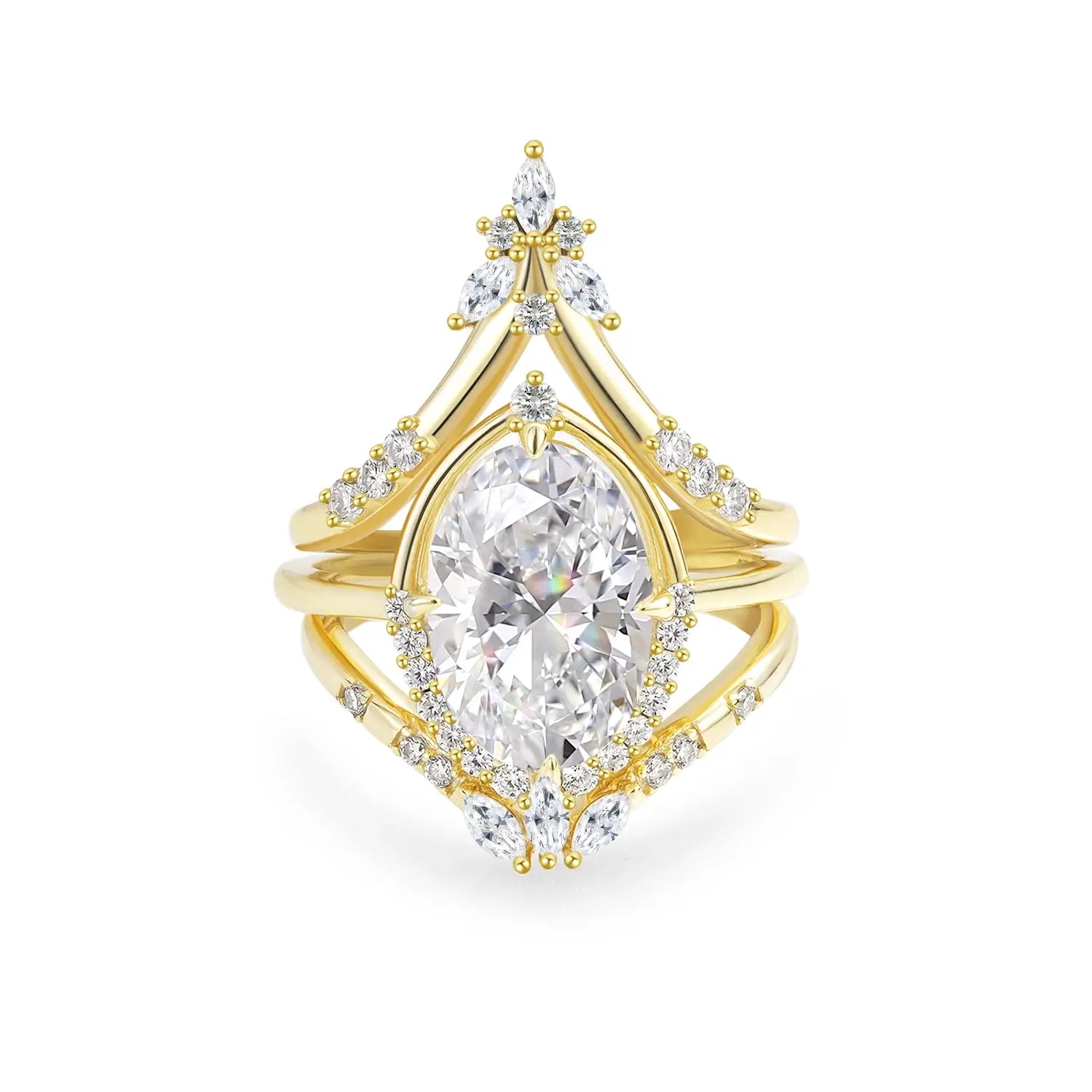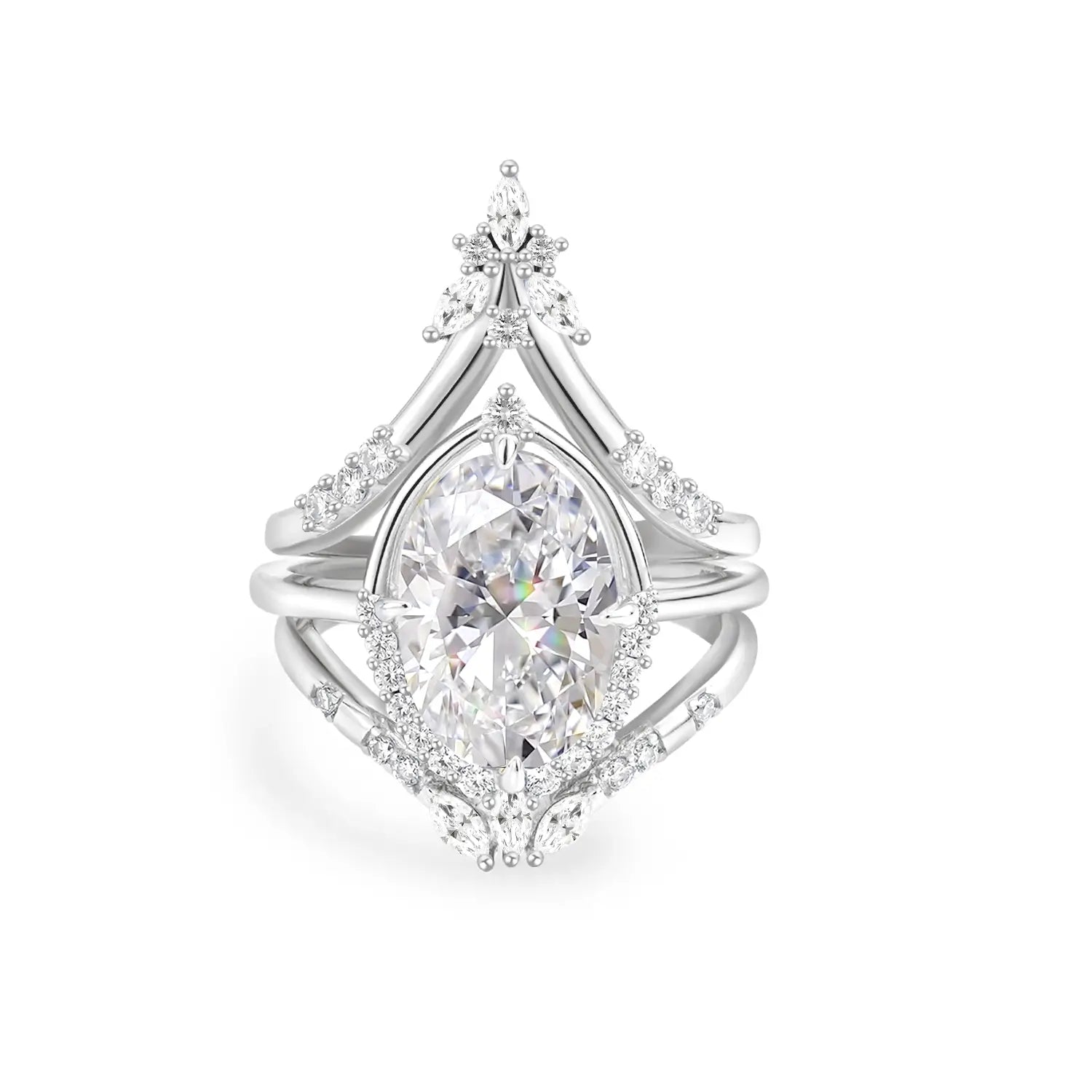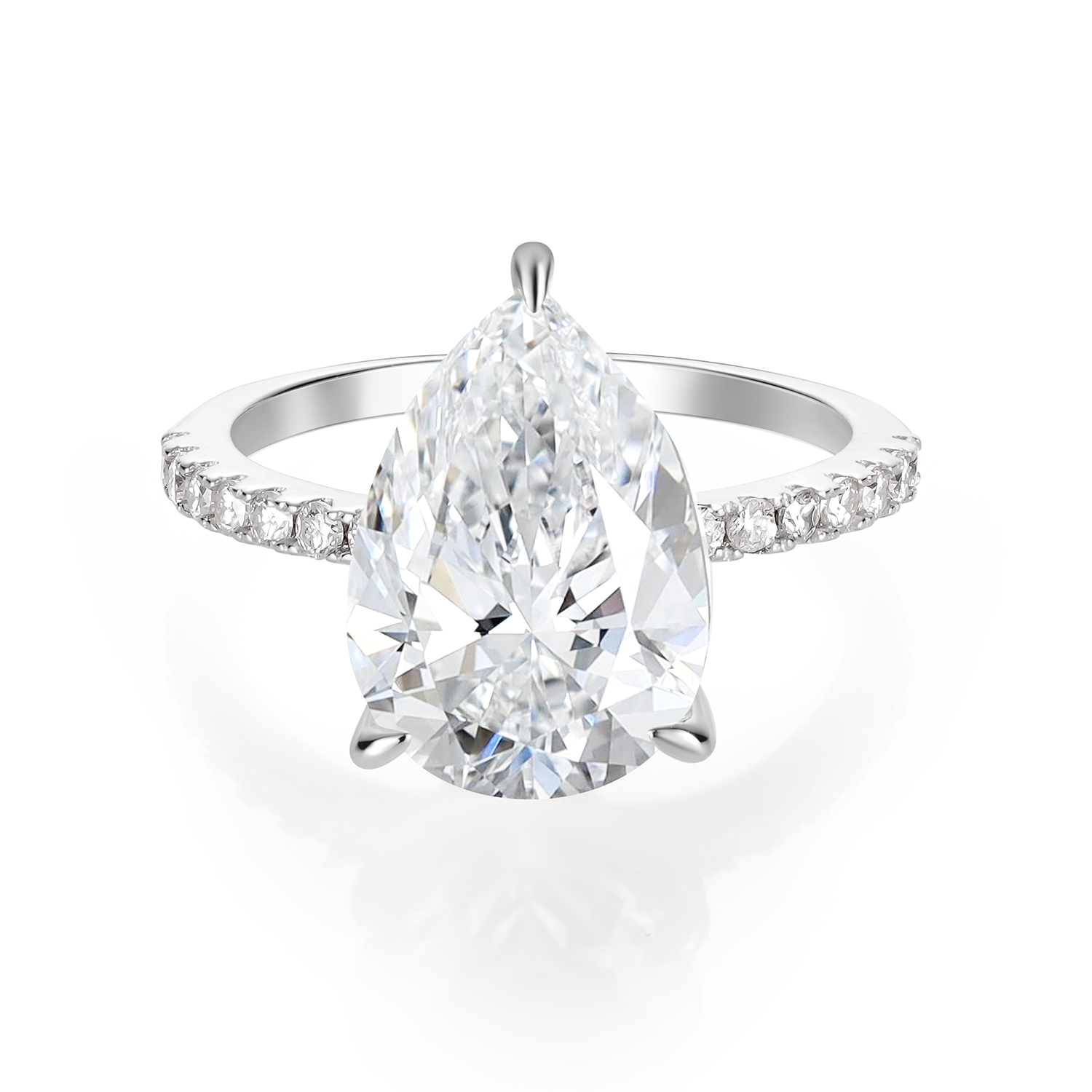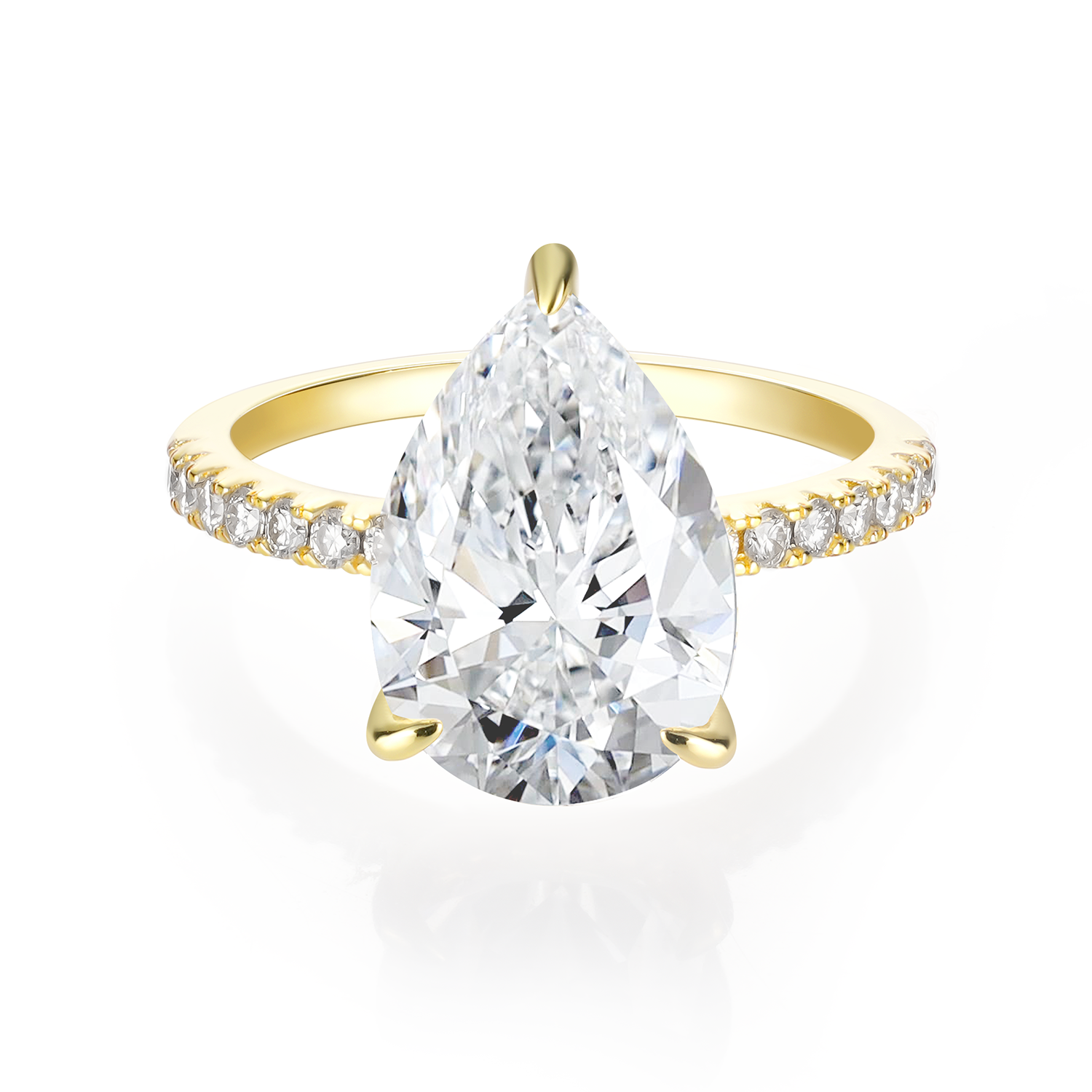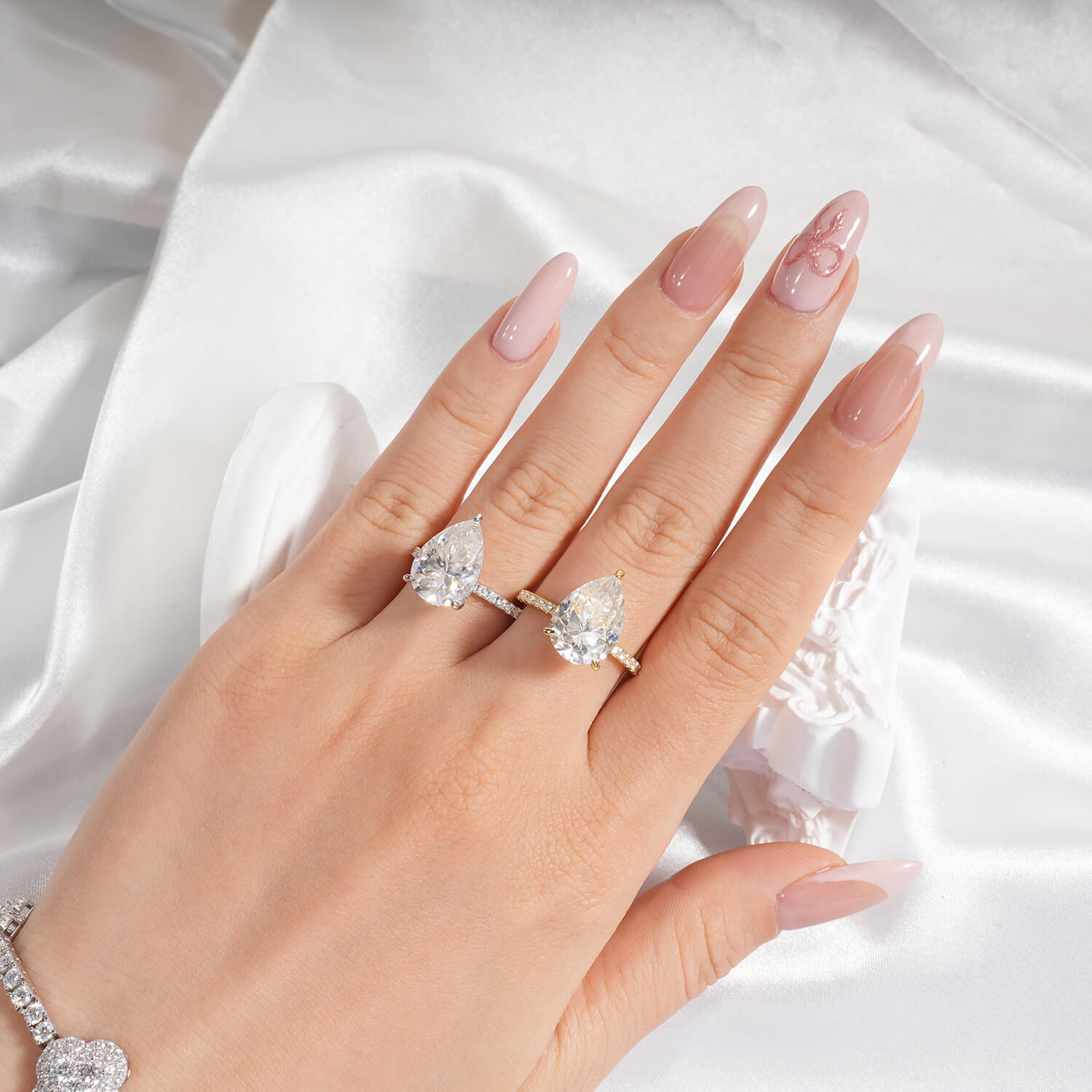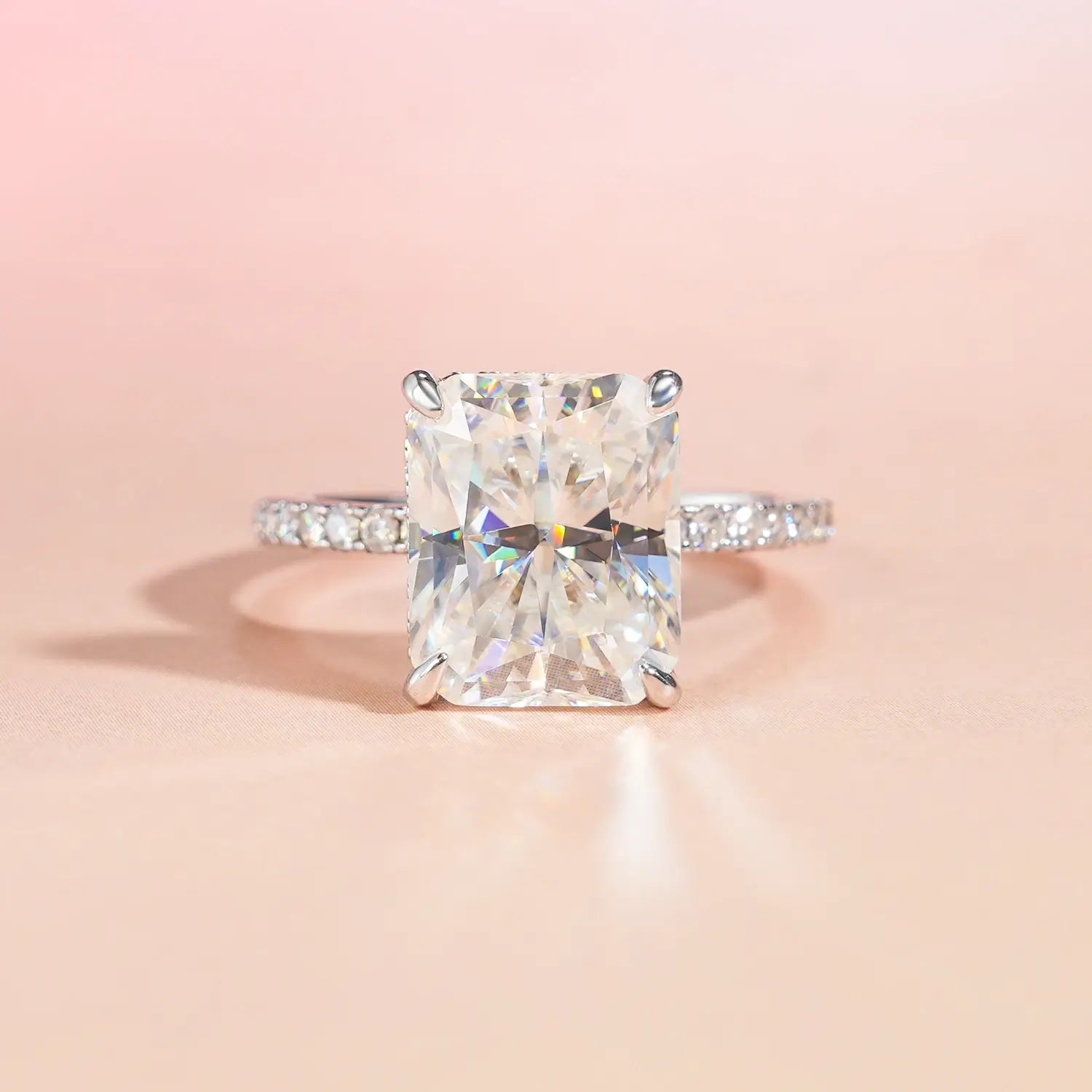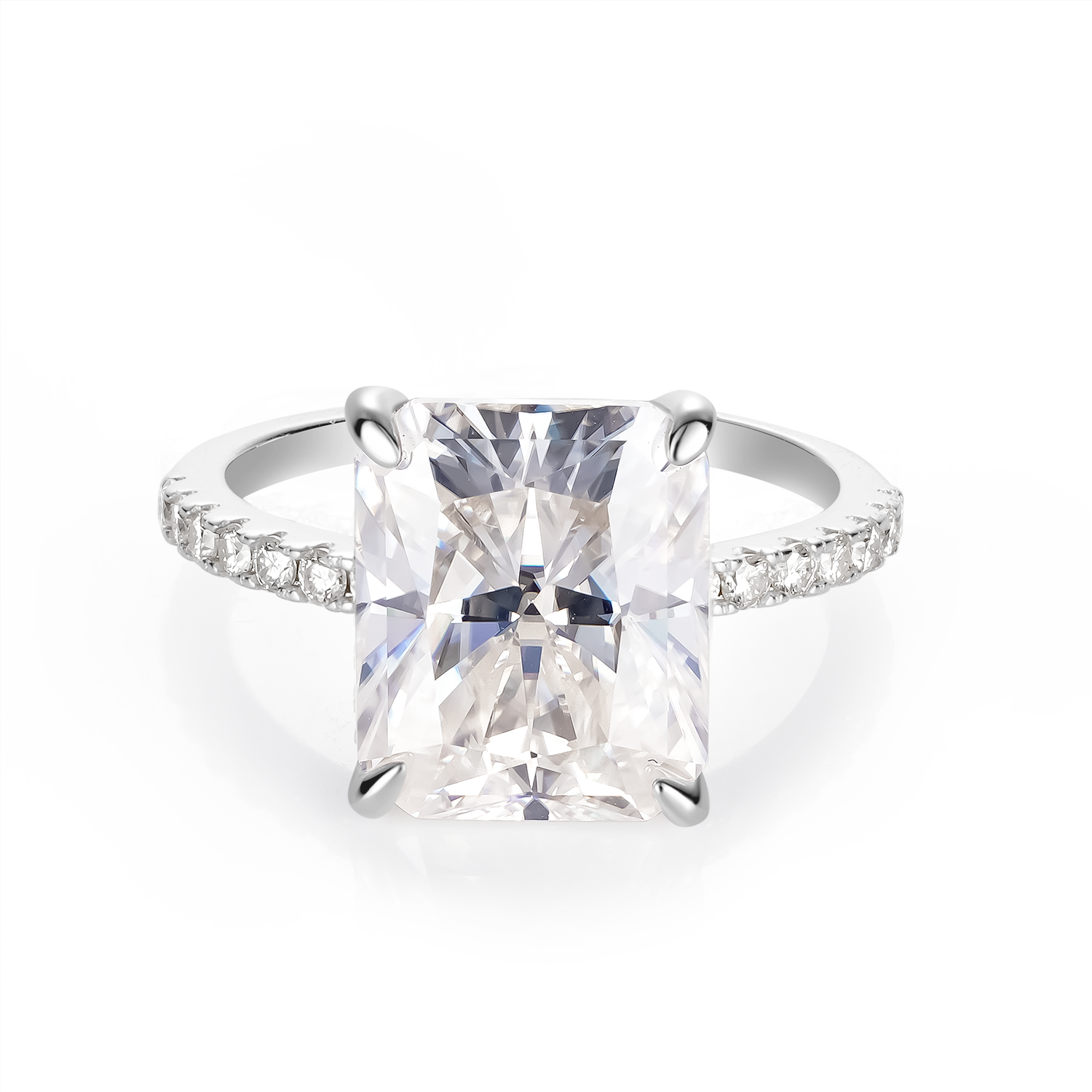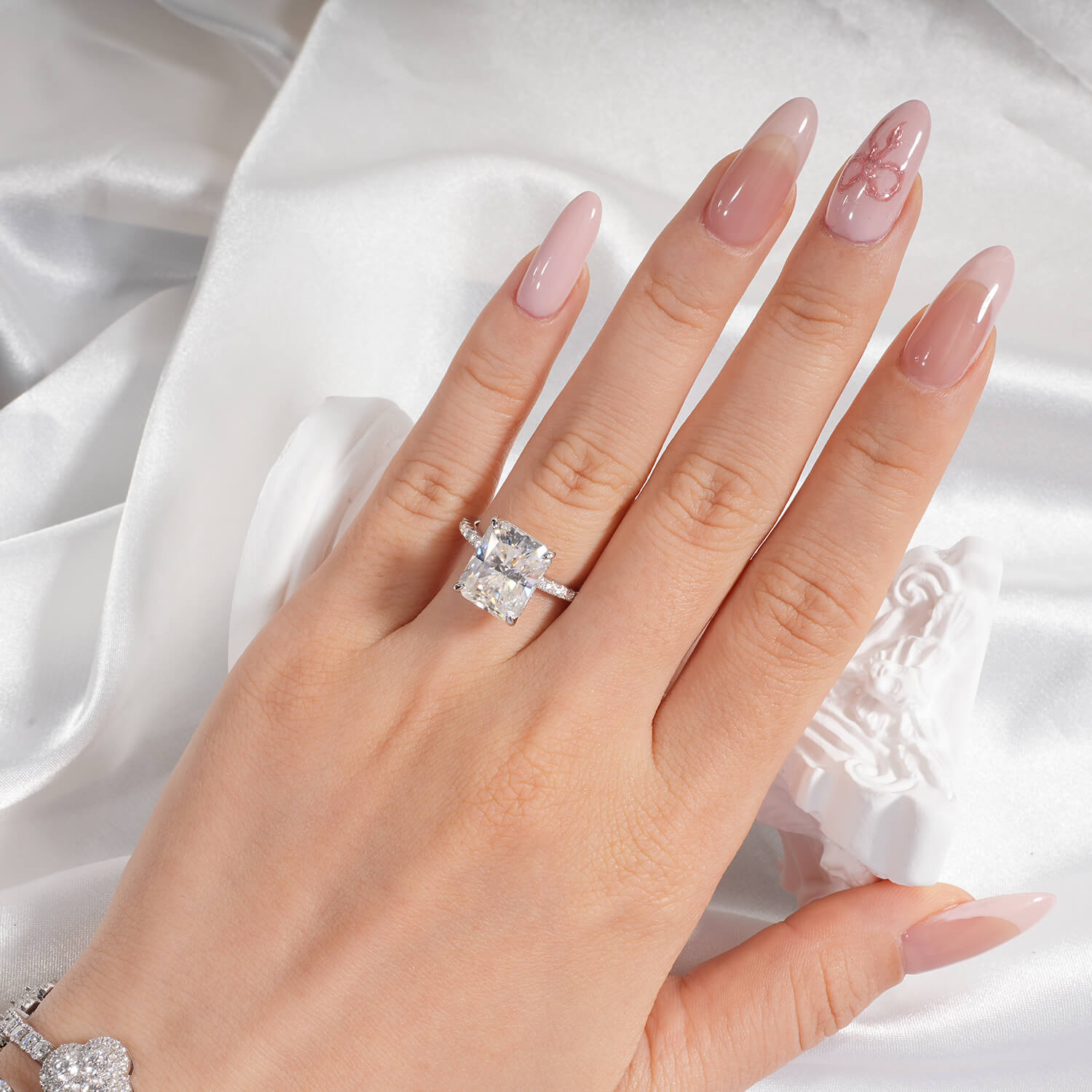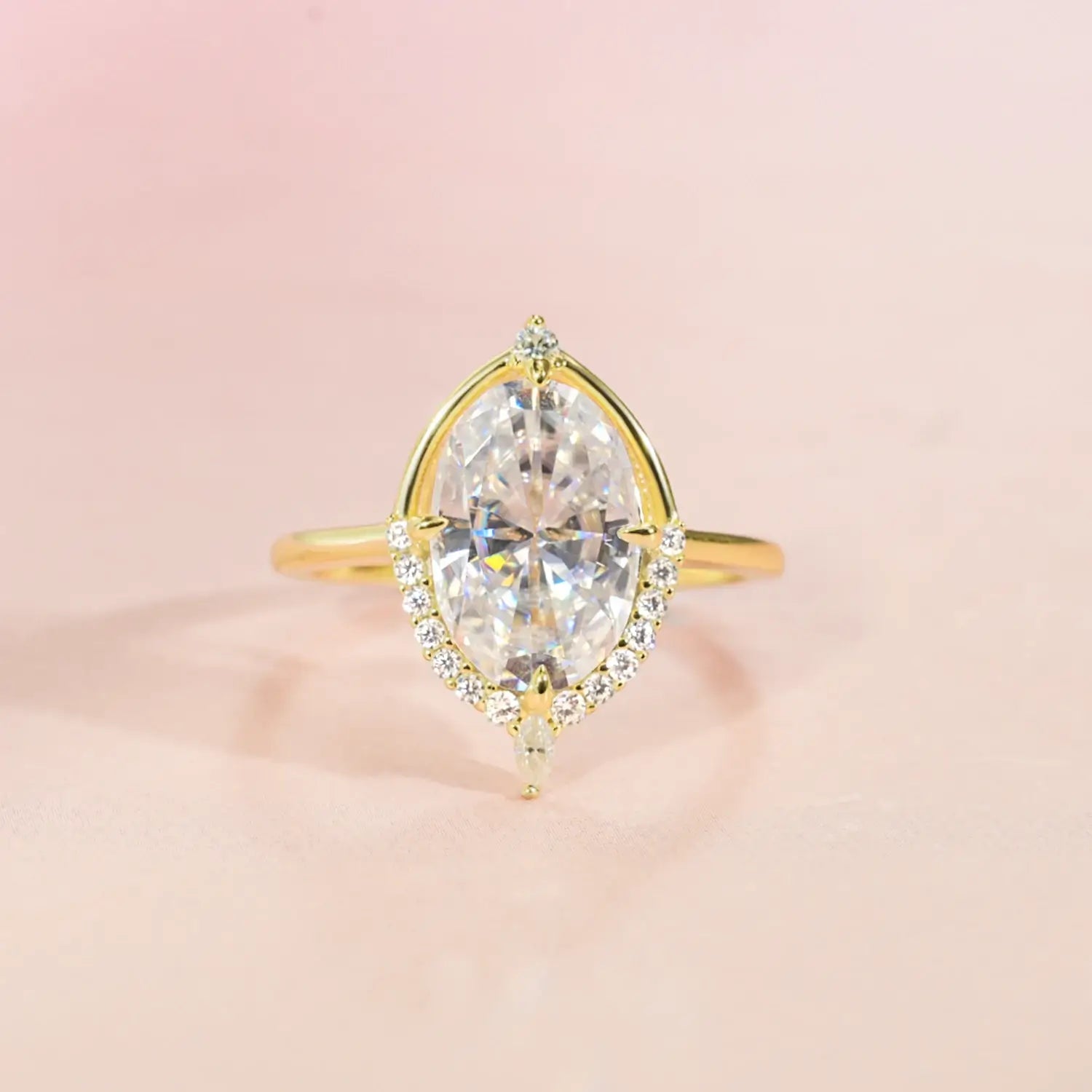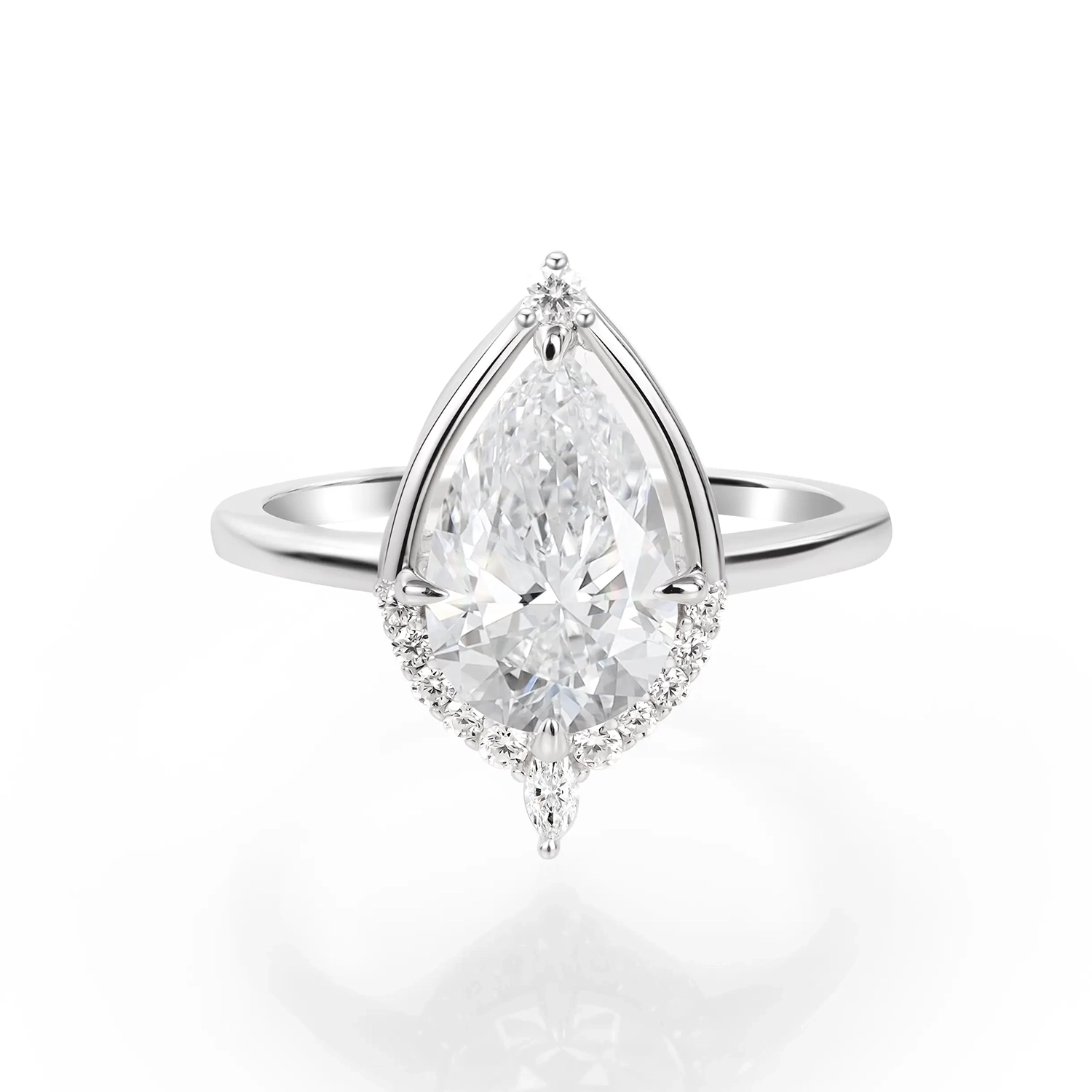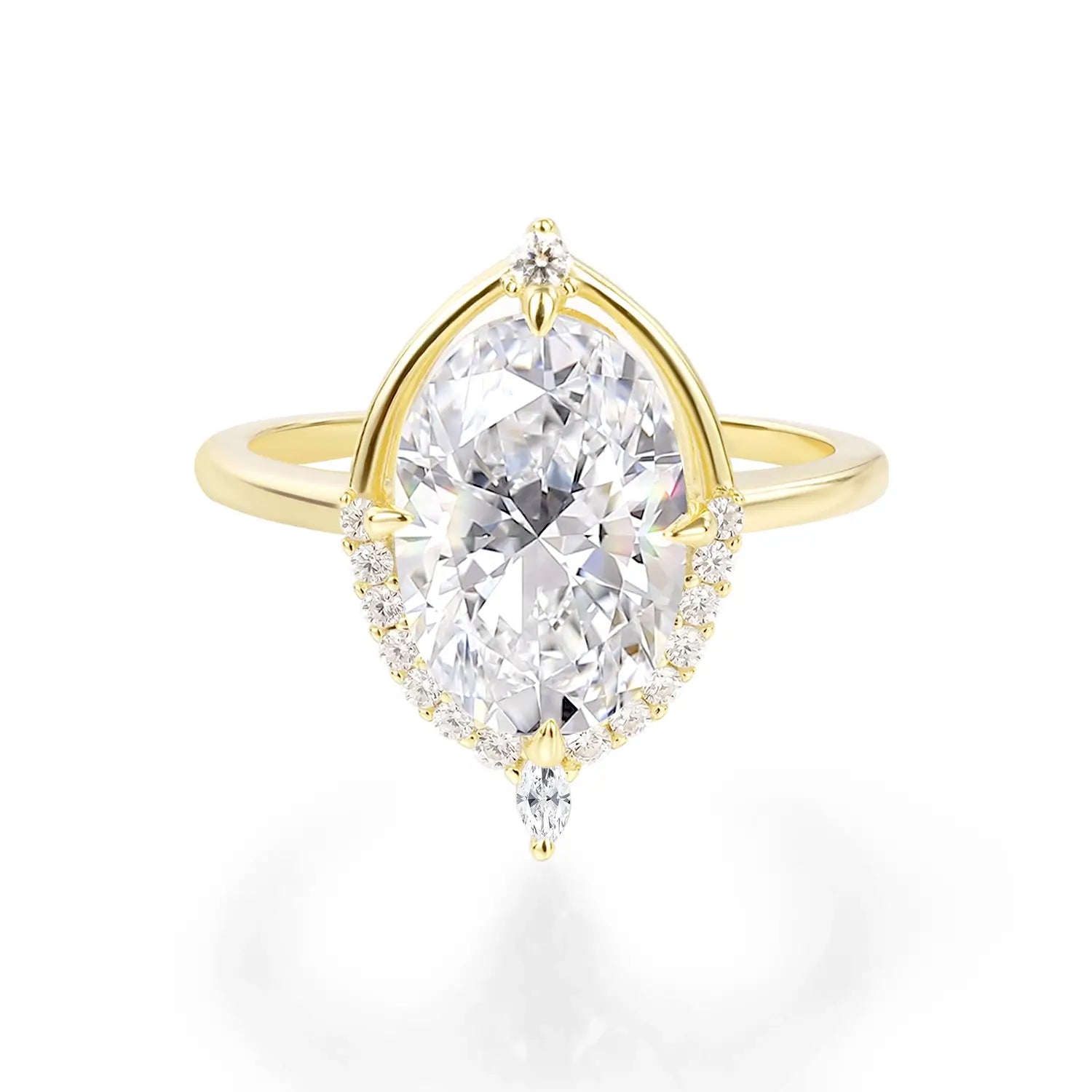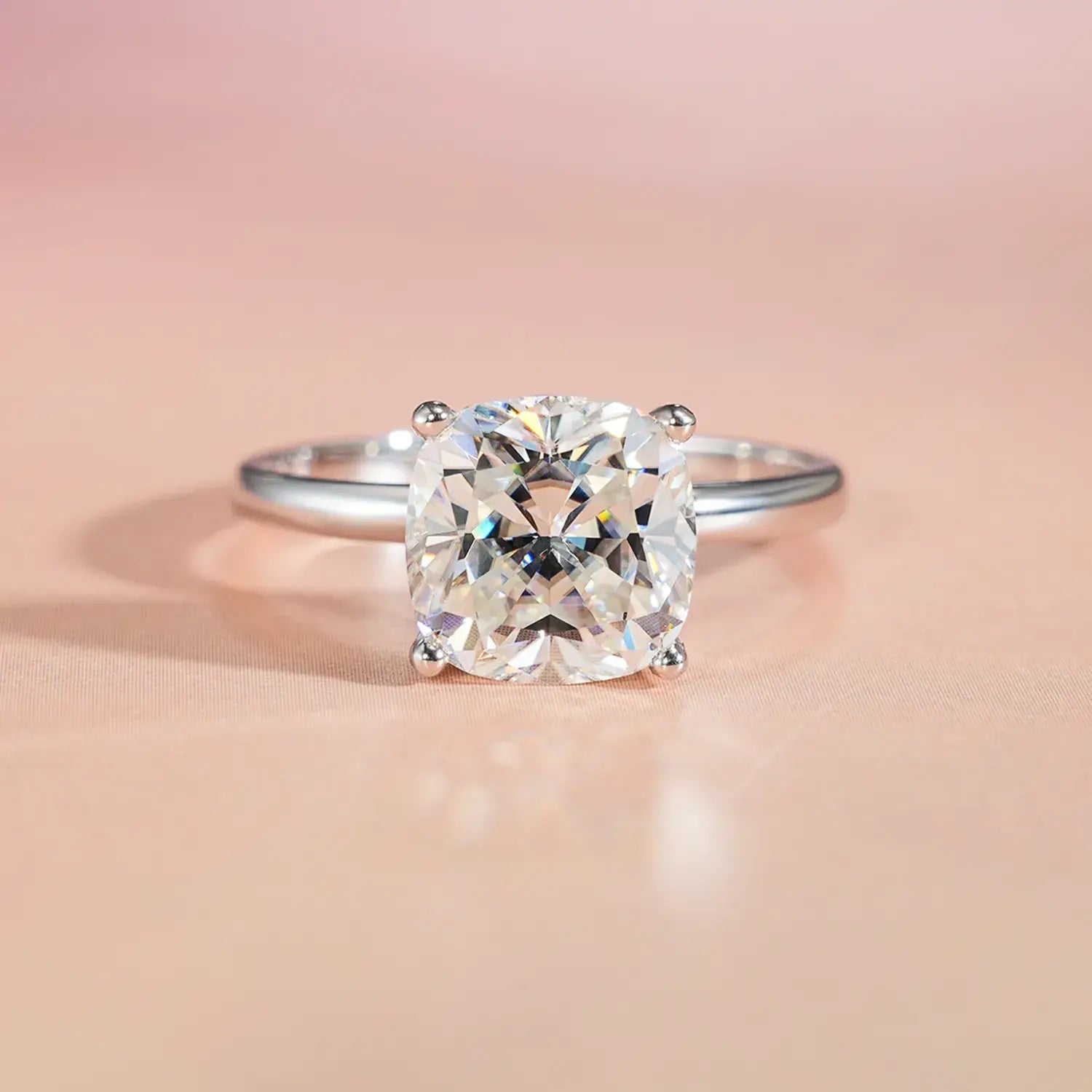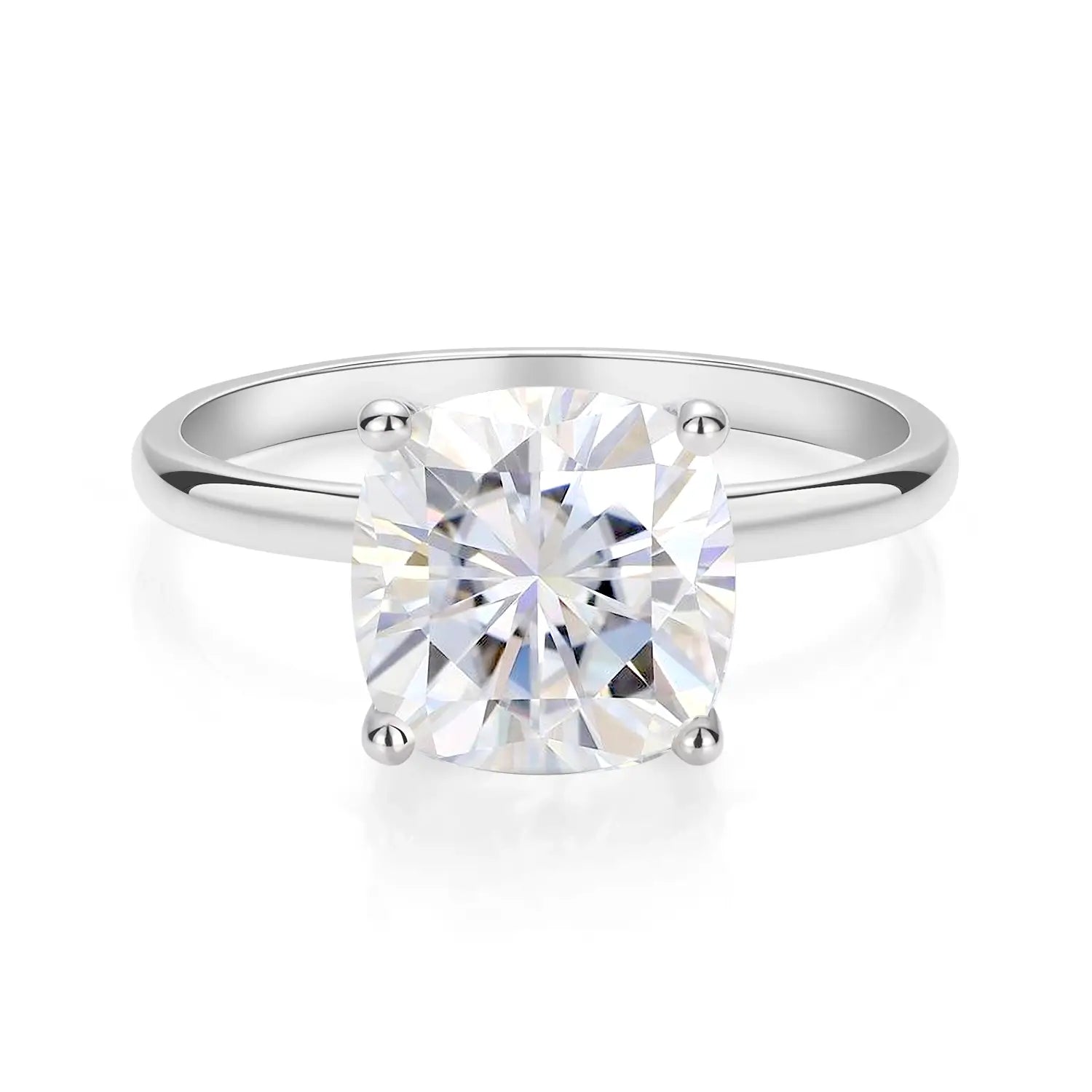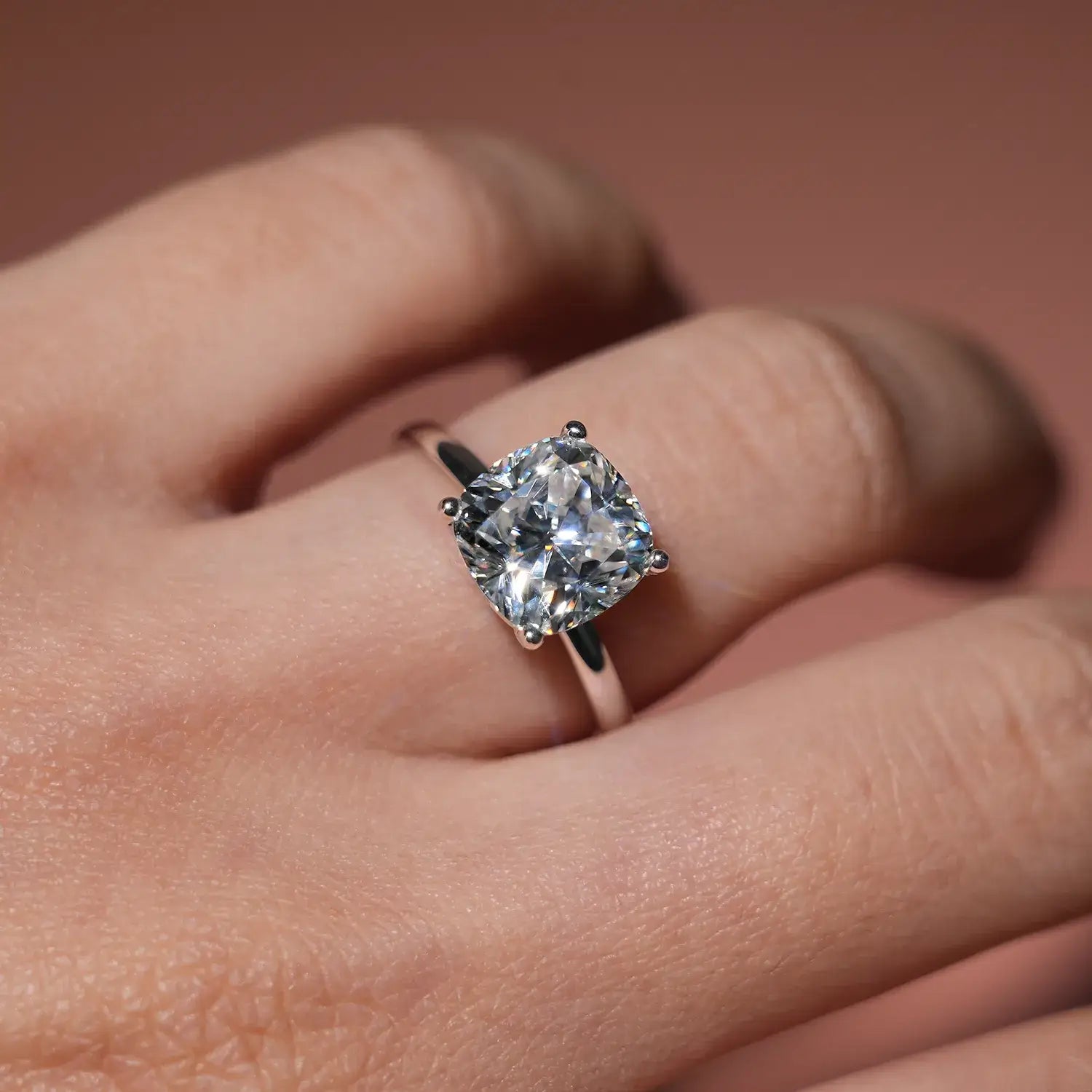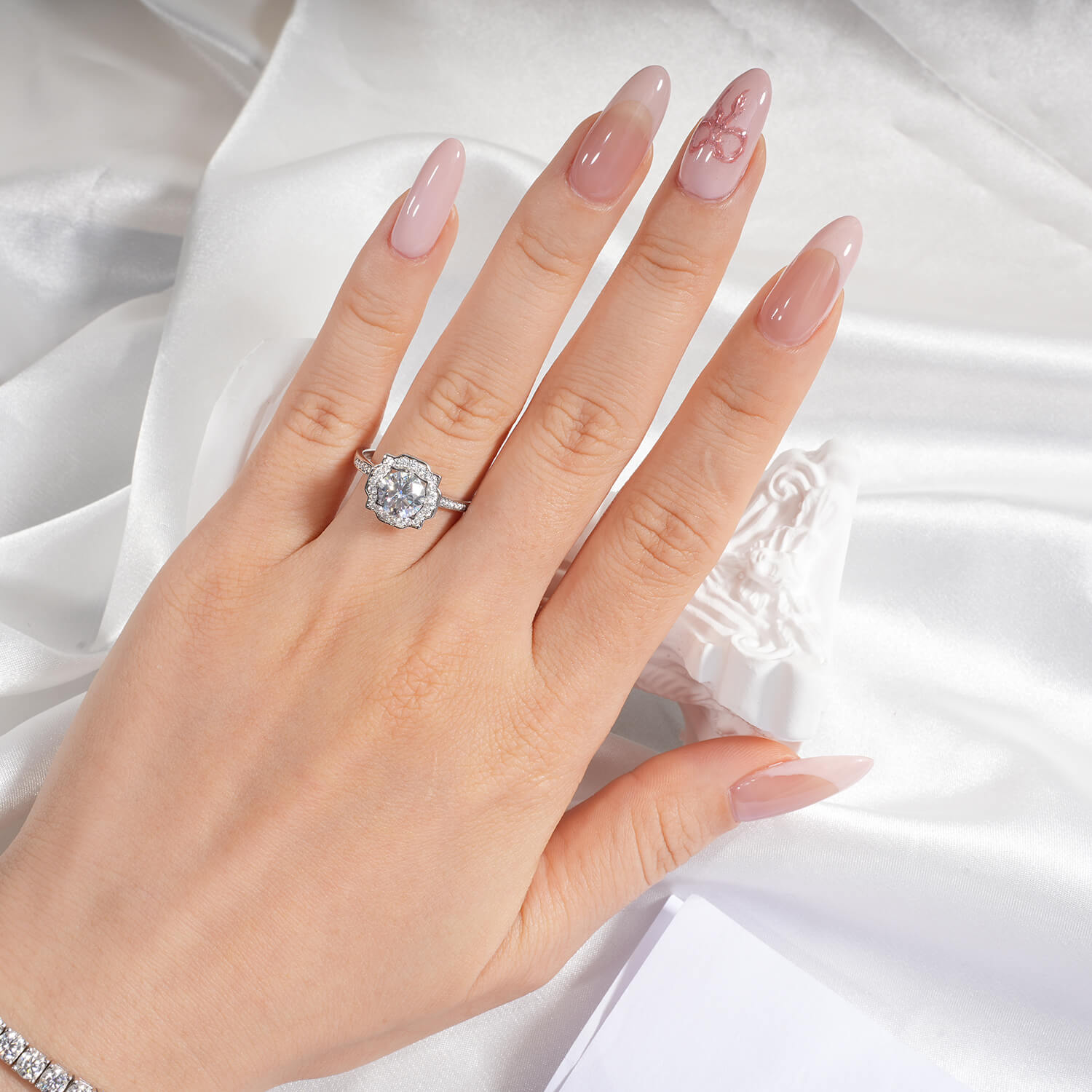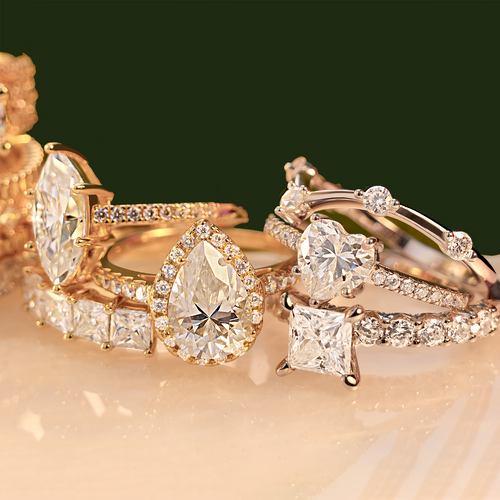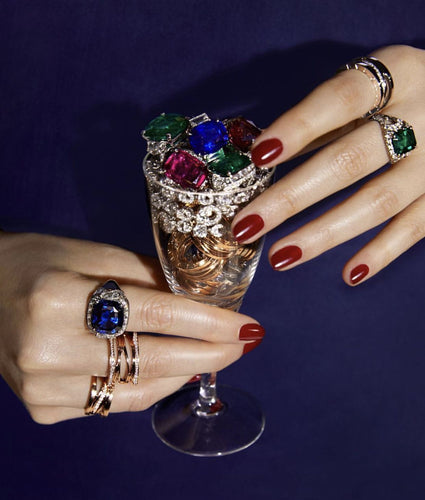Simulated diamonds (or diamond simulants) look similar to diamonds, but they do not share the same chemical, physical and optical properties. If you are considering purchasing a diamond simulant, make sure you know the unique characteristics of the stone you are purchasing.
What materials are used to simulate diamonds?
Laboratory-grown (also called "synthetic") gemstones and natural gemstones can be used to imitate a specific gemstone if they look similar to that gemstone. Gemologists call these imitations "simulants." Natural materials such as colorless quartz, topaz, sapphire, beryl, and especially zircon have been used as diamond simulants for centuries.
Today, many of the most popular diamond simulants, such as synthetic zirconia and moissanite, are synthetic gemstones that have been created in a laboratory. For example, synthetic zirconia is created by taking powdered raw materials, heating them to their melting point, and then cooling the mixture to solidify.
Important: Diamond simulants are not the same as laboratory-grown (or lab-grown) diamonds. Laboratory-grown diamonds have the same chemical, physical, and optical properties as natural diamonds, while simulants do not.

How do simulated diamonds compare to diamonds??
Each simulant has its own unique properties, so it's difficult to compare all simulants as a group to diamond. But in general, diamond is harder than any simulant. The Mohs scale rates the hardness of gemstones and minerals. Diamond ranks at the top of the hardness scale (10), making it the hardest naturally occurring substance on Earth. This means that most diamonds can withstand daily wear and tear, while many simulants will quickly develop scratches and visible wear, especially at facet junctions. Because of their higher hardness, diamonds also take a lot more polish than other gemstones or simulants. This means that diamonds shine brighter than most simulants.
Another factor to be aware of is that simulants vary in density (ratio of weight to volume). This means that, for the same carat weight, a simulant that is denser than diamond (such as gadolinium gallium garnet (GGG)) may appear smaller than diamond, while a simulant that is less dense than diamond may appear larger than diamond.
Finally, while diamond has more fire than most simulants, some simulants, such as synthetic moissanite and synthetic rutile, have more fire than diamond. Some people like the intensity of fire in these simulants, while others feel that the excess fire draws attention and gives away the truth — that this is a "different" gem, not a diamond.
Diamond Simulants: Pros and Cons
If you are considering purchasing a diamond simulant, read our list of the most popular diamond simulants and their pros and cons. All simulants can be cleaned safely with warm, soapy water, but some may react in a variety of ways to other common cleaning methods.
Synthetic Cubic Zirconia (CZ)
Material: Synthetic Zirconia (CZ) Laboratory-made Mohs Hardness: 8.5
Care and Cleaning: Ultrasonic: Safe Steam: Safe
Advantage:
CZ is very affordable. With a hardness of 8.5, it is usually colorless and has no flaws. It has slightly more fire than diamond.
Shortcoming:
CZ scratches more easily than diamonds and is not as bright. Some people think its rich, sparkling color looks "artificial." Colorless CZ may turn yellow over time.
Synthetic Moissanite
Material: Synthetic Moissanite Laboratory Made Mohs Hardness: 9.25
Care and Cleaning: Ultrasonic: Safe Steam: Safe
Advantage:
It is the hardest of all diamond simulants and has twice the fire of diamond. It can also be colorless or nearly colorless with extremely high clarity. It is less likely to absorb oils and grease than diamond.
Shortcoming:
Doubly refracted, so from certain angles it may appear slightly hazy due to double images of the back facets. At larger sizes, it may appear “artificial” due to its extreme fire, thus revealing it to be a simulant, not a diamond.
Zircon
Material: Zircon Natural Mohs Hardness: 6 to 7.5
Care and Cleaning: Ultrasonic: Not recommended Steam: Not recommended
Advantage:
A natural gemstone, it is the oldest mineral on earth. Its fire is similar to that of diamond.
Shortcoming:
Zircon is not very hard or durable. It can be very fragile and should be worn with extreme caution as a ring stone. It is a doubly refractive stone and when you look inside a zircon you will see double images of its facets. This can make it appear blurry.
Sapphire, colorless
Natural Sapphire, colorless Natural or synthetic Mohs hardness: 9
Care and Cleaning: Ultrasonic: Generally safe Steam: Generally safe
Advantage:
Colorless sapphires are not only hard but also tough, making them very durable as ring stones. If you want a natural stone, natural colorless sapphires are relatively affordable.
Shortcoming:
Colorless sapphires are not as bright and sparkling as diamonds and require frequent cleaning to keep them looking their best. True colorless natural sapphires are very rare. Most colorless sapphires are usually nearly colorless.
Synthetic rutile
Material: Synthetic Rutile Laboratory-created Mohs Hardness: 6 to 6.5
Care and cleaning: Do not use ultrasonic or steam cleaning devices
Advantage:
Synthetic rutile is brighter than diamond and has more than seven times the fire of diamond.
Shortcoming:
Synthetic rutile has a low hardness and is therefore fairly easy to scratch, usually with rounded facet connections. It is a double-refractive gemstone, with double images of its facets visible, making the interior of the gemstone appear blurry. Synthetic rutile is usually pale yellow, and its "psychedelic" intense fire easily exposes the fact that it is not a diamond.
Gadolinium Gallium Garnet (GGG)
Material: Gadolinium Gallium Garnet (GGG) Laboratory-made Mohs Hardness: 6.5
Care and Cleaning: Ultrasonic: Generally safe Steam: Generally safe
Advantage:
GdG garnet has a fire similar to diamond. It is usually colorless.
Shortcoming:
GdGG has a low hardness, so it scratches fairly easily and is usually found with rounded facets. It is about twice as dense as diamond, so it is smaller than diamond of the same carat weight. It is no longer commonly used as a diamond simulant and is usually only found in vintage jewelry.
Yttrium Aluminum Garnet (YAG)
Material: Yttrium Aluminum Garnet (YAG) Laboratory-made Mohs Hardness: 8.5
Care and Cleaning: Ultrasonic: Safe Steam: Safe
Advantage:
Yttrium aluminum garnet is not only hard but also has high clarity.
Shortcoming:
They lack the obvious fire and brilliance of diamond. They are no longer commonly used as diamond simulants and are usually only found in vintage jewelry.
Should I buy diamond simulants?
There are many factors to consider when choosing between a diamond and a diamond simulant. When people consider buying a diamond simulant, it is usually because they are more affordable than diamonds of the same size, color and clarity.
But are they worth it? That depends on how comfortable you are with each simulant's unique characteristics. All simulants are not as hard as diamond, but some are hard and durable enough to be worn as a gemstone in a ring for daily wear. Many simulants do not have as much brilliance or fire as diamond, but a few do have more fire than diamond. Ultimately, whether a simulant has more or less fire and brilliance, you should see it in person to know if its unique sparkle and fire matches your taste.
Another factor to consider is the gemstone's origin. Natural diamonds were formed naturally deep in the earth millions to billions of years ago and then came to the surface in volcanic eruptions, which cannot be said of laboratory-grown simulants or lab-created diamonds. The origin of a natural diamond can infuse sentimental value into a piece of jewelry, especially if it is destined to become a family heirloom.
Natural diamonds will also retain more value than diamond simulants. But if you’re looking for an affordable, attractive alternative to diamonds, diamond simulant may be the way to go!
Whichever material you choose, make sure the seller accurately informs you of the stone’s identity and durability, as these can affect the stone’s price and long-term care. Both diamonds and diamond simulants will retain their sparkle longer if properly cared for and cleaned.
If you’re unsure of the identity of a stone you own or are considering purchasing, you can always submit the stone to the GIA laboratory for a report.
